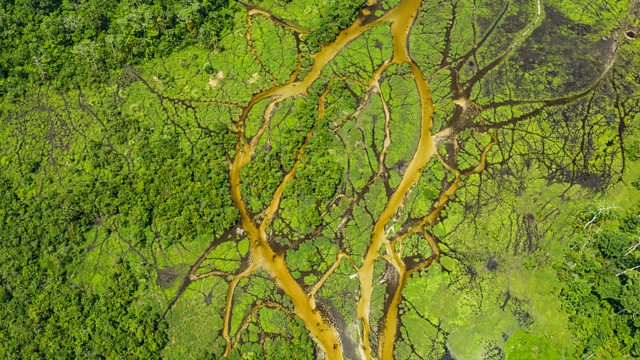What peat can tell us about our future
We understand how peat can show us climate change tipping points. Also, we look at how hurricanes are intensifying and bust some COP jargon.
The Congo Basin is home to the world’s largest peatland. Simon Lewis, Professor of Global Change Science at UCL and the University of Leeds, tells Roland how peatlands all around the world are showing early alarm bells of change. From the boreal Arctic forests to the Amazon, Simon helps us understand how they could action huge change in the climate. Simon is joined by Dr Ifo Averti, Associate Professor in Forest Ecology at Universite Marien Ngouabi in the Congo who helps us understand what this landscape is like.
Hurricane Ian, which recently caused devastating damage to Cuba and the United States, may signify a growing trend of increasingly powerful storms. Karthik Balaguru, climate and data scientist at the Pacific Northwest National Laboratory, explains how climate change is causing hurricanes to rapidly intensify, making them faster and wetter.
On Sunday 6th November, COP27 will begin in Sharm El-Sheikh, Egypt. Dr Debbie Rosen, Science and Policy Manager at CONSTRAIN, breaks down some of the jargon we might hear throughout the conference.
We know the Earth's atmosphere is warming and it's thanks to us and our taste for fossil fuels. But how quickly is this melting the ice sheets, ice caps, and glaciers that remain on our planet? That's what listener David wants to know.
With the help of a team of climate scientists in Greenland, Marnie Chesterton goes to find the answer, in an icy landscape that's ground zero in the story of thawing. She discovers how Greenland’s ice sheet is sliding faster off land, and sees that the tiniest of creatures are darkening the ice surface and accelerating its melt.
CrowdScience explores what we're in store for when it comes to melting ice. In the lead-up to yet another UN climate conference, we unpack what is contributing to sea level rise – from ice sheets in Greenland and Antarctica, to melting mountain glaciers and warming oceans. There's a lot of ice at the poles. The question is: how much of it will still be there in the future?
Research Professor and climate scientist Jason Box from the Geological Survey of Denmark and Greenland shows us how much ice Greenland we've already committed ourselves to losing, even if we stopped burning all fossil fuels today. His team, including Jakob Jakobsen, show us how these scientists collect all this data that helps feed climate models and helps us all to understand how quickly the seas might rise.
Professor Martyn Trantor from Aarhus University helps us understand why a darkening Greenland ice sheet would only add to the problem of melting. And climate scientist Ruth Mottram from the Danish Meteorological Institute breaks down how the ice is breaking down in Antarctica and other glaciers around the world.
Image credit: Getty Images
Last on
More episodes
Broadcasts
- Sat 5 Nov 2022 23:06GMT91�ȱ� World Service South Asia
- Sun 6 Nov 2022 00:06GMT91�ȱ� World Service East Asia
- Sun 6 Nov 2022 01:06GMT91�ȱ� World Service except East Asia & South Asia
Podcast
-
![]()
Unexpected Elements
The news you know, the science you don't


